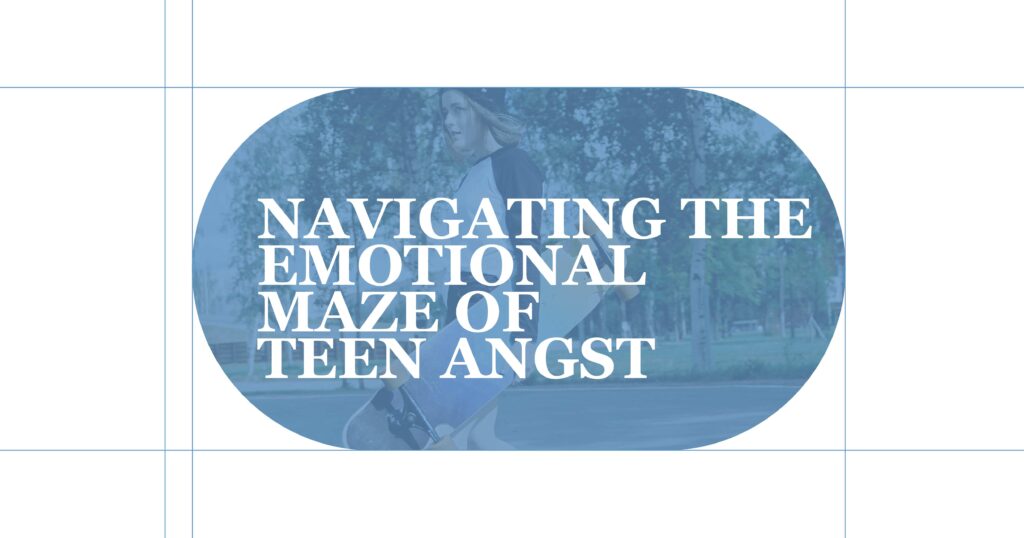Adolescence has often been called the most turbulent chapter of life, a whirlwind of self-discovery, peer pressure, rebellion, and raw emotion. For parents and teens alike, these years can feel like wandering through a maze with no clear exit. At the heart of it lies a term often used but rarely understood: teen angst. But what is its true meaning, and how can families distinguish normal growing pains from serious concerns?
This guide unpacks the meaning of teen angst, explores its signs, triggers, and consequences, and offers strategies for navigating these stormy years with compassion and clarity.
Understanding Teen Angst
Teen angst is more than just occasional frustration or moodiness. It’s a mix of emotional turmoil, identity struggles, and social pressures that arise as teenagers transition from childhood to adulthood. It’s not a mental health disorder in itself, but it can often mimic or mask deeper issues if left unchecked.
Identifying Teenage Angst and Its Impact
Teen angst can take many forms: irritability, restlessness, mood swings, or a sense of disconnection. While some level of angst is normal in adolescence, chronic or extreme cases can:
- Affect school performance.
- Strain family relationships.
- This leads to isolation from peers.
- Increase the risk of unhealthy coping behaviors, such as substance use.
Recognizing the Signs of Teenage Angst
Understanding the signs of teenage angst helps parents know when their teen is struggling. Some common signs include:
- Frequent mood swings and irritability.
- Expressing feelings of loneliness or alienation.
- Increased defiance or resistance to authority.
- Changes in sleep, appetite, or social activities.
Hillside Horizon
Common Triggers of Teenage Angst
Several factors can stir up intense emotions during adolescence, often making the teenage years feel like an emotional rollercoaster. Understanding these triggers can help parents and caregivers offer the right support and guidance. Some of the most common include:
- Identity crisis: Teens may question who they are, what they value, and where they belong.
- Peer pressure: The need for acceptance can lead to risky behavior or deep insecurity.
- Academic stress: Fear of failure or pressure to succeed weighs heavily on many teens.
- Family conflict: Parental expectations, sibling rivalry, or divorce may intensify emotional distress.
- Coming-of-age challenges: The push for independence clashes with lingering dependence on parents.
Teen Angst vs. Mental Health Concerns
While teen angst is a natural part of coming of age, it’s essential to understand when those emotional ups and downs shift from normal developmental experiences to signs of deeper mental health concerns. Occasional irritability, mood swings, or frustration are expected as teenagers navigate new responsibilities, shifting identities, and social pressures.

However, when these emotions become persistent, overwhelming, or start interfering with daily life, affecting school performance, relationships, or self-esteem, they may point to conditions like depression, anxiety disorders, or trauma-related issues rather than typical adolescent angst. Recognizing this difference early can make all the difference in getting teens the support they need before their struggles intensify.
Differentiating Normal Emotional Turmoil from Disorders
Not every emotional outburst or mood swing is a cause for concern – many are simply part of growing up. However, it’s important for parents and caregivers to understand the key differences between typical teenage angst and signs of a potential mental health disorder. The main distinctions often come down to the intensity, duration, and impact of what your teen is experiencing. Here’s how to tell them apart:
- Normal angst: Irritability after arguments, stress before exams, or temporary withdrawal after peer conflict.
- Possible disorder: Persistent sadness, ongoing hopelessness, self-harm, or suicidal thoughts.
When Mood Swings Signal Deeper Issues
Mood swings are expected during adolescence, but extreme shifts can indicate more:
| Typical Mood Swings | Concerning Mood Swings |
| Short-lived frustration after minor setbacks | Intense anger, aggression, or sadness lasting days/weeks |
| Irritability that passes with reassurance | Withdrawal from family and friends, refusal to engage |
| Stress around exams or social events | Loss of interest in hobbies, poor grades, or self-harm behaviors |
Hillside Horizon
Coping Mechanisms and Parental Support
Supporting a teen through angst requires patience, empathy, and open communication. Helpful approaches include:
- Active listening: Let them express feelings without immediate judgment or solutions.
- Encourage healthy outlets: Sports, art, journaling, or music provide release for emotions.
- Set boundaries with flexibility: Balance independence with guidance to help them feel trusted but supported.
- Model emotional regulation: Teens learn from observing how parents handle stress.
- Create safe spaces: Ensure your teen feels comfortable discussing difficult topics without fear of punishment.
When to Seek Professional Help at Hillside Horizon for Teens
Sometimes, teen angst may spiral into something bigger. If you notice persistent sadness, severe anxiety, extreme isolation, or risk-taking behaviors, professional support can make a difference.
At Hillside Horizon for Teens, we specialize in helping adolescents navigate emotional turmoil with personalized, evidence-based care. Our team offers therapy, guidance, and support for both teens and families to heal together and build resilience.
Don’t wait for things to escalate — seeking help early can empower teens to manage angst in healthy, lasting ways.

Hillside Horizon
FAQs
What is the connection between adolescence and emotional turmoil, and how does it relate to teenage angst?
Adolescence is a period of rapid physical, emotional, and social change, which naturally brings turmoil. Teenage angst reflects the struggle to adjust to these changes while searching for identity and independence.
How do identity crises during the coming-of-age period contribute to feelings of teenage angst?
When teens question who they are or where they fit, it creates inner conflict and uncertainty. This identity crisis often fuels feelings of confusion, frustration, and anxiety.
In what ways do peer pressure and rebellion manifest as symptoms of teenage angst?
Peer pressure may lead teens to act against their values, causing stress or insecurity. Rebellion often emerges as defiance against authority figures as they assert independence.
Are mood swings a normal part of teenage self-discovery, or do they indicate a deeper issue related to angst?
Mood swings are normal during adolescence, but should balance out over time. They may signal deeper emotional struggles if they become extreme, persistent, or interfere with daily life.
How can parents effectively support their teens through the turbulence of teenage angst without exacerbating the emotional turmoil?
Parents can support teens by listening, validating feelings, and offering guidance without judgment. Creating a supportive home environment helps teens feel secure while they work through their challenges.





